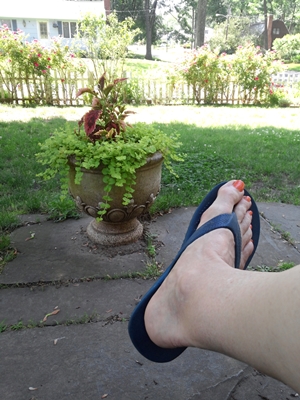Make sure that your sod is laid properly. The soil requires preparation before sod can be laid. Take out any weeds, then mix up the soil into a tilth that is fine. Using a light but firm touch, compact the soil until it is flat. You then will want to thoroughly wet the soil. Avoid laying your sod in straight rows with all of the seams lining up. Instead, stagger the rows for a more pleasing visual effect. Make sure that the sod forms an even, flat surface, and if you have any gaps show between the sod, fill them with a little bit of soil. Sod must be watered every day for about two weeks, and then it will have rooted and be completely ready to be walked on.
Horticulture can be an extremely relaxing hobby, and one of the best things about it is that it is easy on the wallet. Horticulture can also help bring families, friends, and neighborhoods together. If you have kids, you will see that they will be fascinated by how seeds grow into flowers and vegetables. This also teaches them about appreciating outdoors and nature. This article will make it simpler for you to love gardening, so that you may even have others help you.
Plant perennials that slugs and snails won’t be interested in eating. These creatures can wreak havoc on a garden in a short time. Young plants with susceptible leaves are favorite meals for slugs, including those with smoother or thinner leaves. Some perennials are not preferred meals for snails and slugs, especially if their foliage is hairy and tough, or tastes bad. Good choices in this category are plants such as achillea, campanula, and euphorbia. Heuchera and helleborus also work well.
Properly lay your sod. Get your soil ready before you lay your sod. Get rid of weeds and tilth the soil finely. Make sure your soil is flat and compacted. Water the soil until it is saturated. Sod must be arranged in staggered rows; each joint should offset one another. You want the sod to end up as a flat and even surface. If there are any gaps in between the sod pieces, then you can fill these in with some soil. Water the sod each day for two weeks so it will become well-rooted and ready for foot traffic.
If you’re like many gardeners, autumn means that it’s time to get some delicious fall edibles growing in your garden. Try planting your fall veggies, especially leafy greens, inside of a pumpkin! Scoop the insides out of the pumpkin, and don’t forget to spray the inside with Wilt-Pruf. This will prevent your pumpkin from rotting. When this is finished, you are now ready to plant.
Turn the handles of tools you have on hand into rulers to make measurements in your garden. Tools with substantial handles, like rakes, hoes and large shovels are great for taking measurements. On the floor, simply lay out the handles, then take a tape measure and run it next to them. You can label distances using a permanent marker. Now you have easy access to a long ruler whenever you are gardening.
You could try to boil weeds if you are trying to remain organic. The safest herbicide that you can probably find is a cup of boiling water. Soak weeds with freshly boiled water, just being mindful to not afflict damage on plants you want to keep. Boiling water can hurt the roots of weeds and can prevent them from growing.
If you are going to be doing some horticulture, watch out for stink bugs, especially in the fall! They like beans, peppers, tomatoes and many fruits. They can do serious damage in your garden, so look for an effective method of reducing their population.
Make a plant you love the focal point of your garden. A focal point in the garden will capture your attention. A perfect example of a focal point is using a plant that doesn’t bear any resemblance to those that surround it.
Gardening is a wonderful hobby that can be enjoyed either alone, or with others. You can take what you’ve learned here, and show your family how amazing the hobby is, enjoying it with them as often as you wish.
Aspirin water has disease-prevention properties that can protect plants. One and one half aspirin crushed and added to a two gallon container of water will be a great help for your plants. Help your plants to fight disease by spraying them with the aspirin water. Spray them once about every three weeks.
